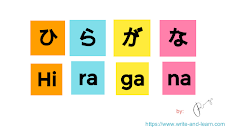Recently, I enrolled in a Spanish class. Enrolled meaning I took it via online class which I could attend anytime I want. Though it's free so ‘enroll’ is not the right word, I guess. What should I call it? Anyway, the course has seven weeks to finish. I am still in week 1. If I wanted to get a certificate, I need to upgrade my status from free lessons to full access so I can unlock the graded and non-graded assignments and I will also earn a certificate, but it will take a lot of cents to upgrade. For now, I will stay for free lessons. But if I have extra cents, I think I will upgrade.
I
will share here the lessons I learned from the online class. Though I still
have a lot of questions, I guess I need to finish the whole seven weeks so I
could fully understand it.
What have I learned so far?
Here are my thoughts:
I. Survival expressions
- When you want to great somebody, you will say:
¡Hola! – Hello
¿Qué tal? – How
are you?
¿Cómo estás? – How are you?
¡Adiós! –
Goodbye
¡Buenos dias! – Good morning
¡Buenas tardes! – Good afternoon
¡Buenas noches! – Good night
- When you ask someone a favor, you will say:
Por favor – Please
- When you want to say your appreciation, you will say:
Gracias – Thank you
De nada – You’re welcome
- When you feel the need to say sorry, you will say:
Lo siento – I’m sorry
- When you cannot understand or you want someone to say it slowly, you will say:
No intiendo – I don’t understand
¿Puede repetir más despacio? – Could you repeat that more slowly?
II. Personal
pronouns
|
English |
|
|
Yo |
I |
|
Tú |
You (informal) |
|
Usted |
You
(formal) |
|
El |
He |
|
Ella |
She |
- Example of asking someone’s name:
¿Cómo te
llamas? – What`s
your name?
Yo me
llamo Irene. – My name is Irene.
Tú te
llamas Anna. – Your name is Anna.
Usted se
llama Juan – Your name is Juan.
El se
llama Carlos. – His name is Carlos.
Ella se
llama Elsa. – Her name is Elsa.
|
Spanish |
English |
|
Nosotros/Nosotras |
We |
|
Vosotros/Vosotras |
You
(informal) |
|
Ustedes |
You (formal) |
|
Ellos/Ellas |
They |
Nosotros (Nosotras) nos llamamos Garcia. - Our
name is Garcia.
Vosotros (Vosotras) os llamáis Rodriguez. - Your name is Rodriguez.
Ustedes se llaman Rodriguez. - Your name is
Rodriguez.
Ellos (Ellas) se llaman Diaz. - Their name is Diaz.
III. B’s and V’s are pronounce the
same way.
In
Spanish language, there is no difference between pronouncing the letter B’s and
V’s. The letter B is read as ‘be’ while V is ‘uve’ but read as ‘ube’. In other Spanish speaking countries, B is read
as ‘be alta’ while V is ‘ve baja’.
Examples:
Vino – wine (but read as bino)
Vaso – glass (read as baso)
Bicicleta – Bicycle
IV. Pronunciations
of R’s
The
pronunciation of R has two ways, the strong
and the soft.
l If the R is in the beginning of a word, it has strong pronunciation.
(as in rrrr~)
l If R is after ‘N’ and ‘L’, it is pronounced in strong way.
l If there are double ‘R’. the pronunciation is strong.
l Not in the three categories, the pronunciation is soft.
Examples:
Rosa – Rose (Pronounce the ‘R’ strongly ~
Rrrrrosa)
Alrededor
– around, surroundings (Pronounce it as alrrrrededor)
Perro
– dog (has a strong pronunciation ~ Perrrrrro)
Arbol
– Tree (soft pronunciation)
Cara
– Face (soft pronunciation)
Pera
– Pear (soft pronunciation)
V. Some conversations
that I’ve learned in the first weeks.
¿Qué es esto? – What is
this?
¿Dónde está el baño? – Where is
the toilet?
¿Cuánto vale esto? – How much
is this?
¡Salud! – Cheers (when you want to toast)
While
attending the first week of the lessons, I asked myself why the exclamation
marks and questions marks are inverted. Or why it is written before and after
the word? Or why there are stresses on some vowel letters?
I
still have questions, but I guess I need to finish the lessons as they will be
answered along the way.
So,
that’s all for today’s post. I will post what I’ve learned in week 2 soon.
See
Yah!
Related Topic:
📔 【Spanish Lesson #2】More Examples
📔 【Spanish Lesson #3】Vocabularies
📔 【SPANISH LESSON #4】The verb “to be”
Latest Update: April 27, 2024
----------------------








Comments
Post a Comment